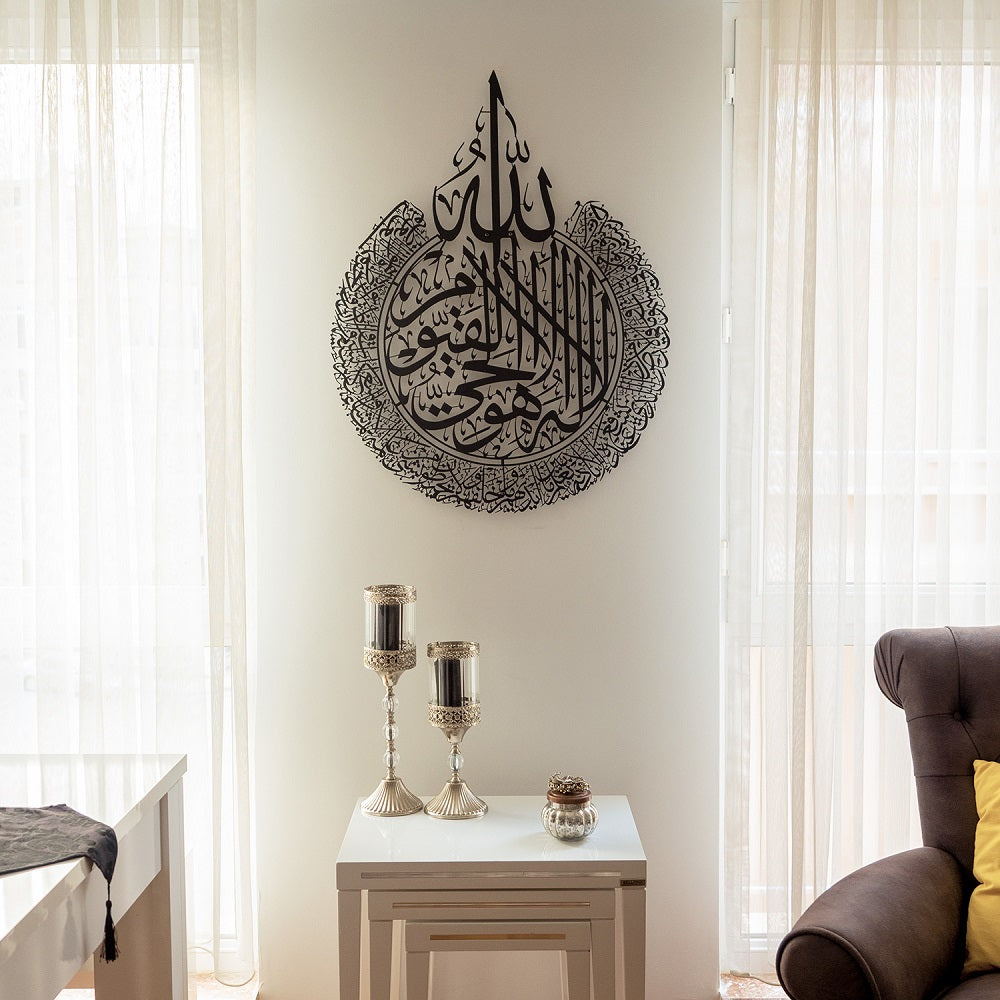Understanding Ayatul Kursi
Ayatul Kursi, or “The Throne Verse,” is a profound verse from the Holy Quran, specifically from Surah Al-Baqarah (2:255). It speaks of Allah’s sovereignty, knowledge, and power. The verse holds immense significance in the Muslim faith, symbolizing protection and divine authority. By incorporating Ayatul Kursi into your decor, you’re not just beautifying your home; you’re reminding yourself and your family of faith and spirituality.
The Art of Ayatul Kursi Wall Decor
As someone who loves both art and spirituality, I have found that Ayatul Kursi wall decor offers a way to express my faith aesthetically. Here’s how you can decorate your space with this powerful verse.
Choosing the Right Medium
Ayatul Kursi can be represented in various art forms, including:
- Framed Prints
- Canvas Art
- Wooden Plaques
- Metal Wall Art
- Textile Tapestries
Color Schemes and Themes
The choice of color can significantly affect the overall feel of the decor. Here are some popular themes to consider:
- Traditional: Rich earth tones and gold accents.
- Modern: Minimalist designs with monochromatic palettes.
- Rustic: Natural wood finishes with earthy colors.
Personal Experience
When I first decided to decorate my living room with Ayatul Kursi art, I chose a canvas print with a gold frame. The warm, welcoming glow of the art not only uplifted the aesthetic of the room but also served as a daily reminder of my faith.
Benefits of Ayatul Kursi Wall Decor
Decorating your space with Ayatul Kursi can offer numerous benefits:
Spiritual Benefits
Many believe that displaying Ayatul Kursi invites blessings and protection into the home. It’s a common custom to recite this verse for security and tranquility.
Aesthetic Appeal
An Ayatul Kursi wall decor piece can be a stunning focal point in any room, bridging the gap between religious and modern art.

Conversation Starter
Having this decor can spark conversations about faith, spirituality, and personal beliefs among family and guests.
How to Incorporate Ayatul Kursi Wall Decor in Your Home
Here are some ideas for placing Ayatul Kursi art around your home:
Living Room
Place a large canvas above the sofa or a smaller framed piece on a side table.
Bedroom
Position a piece near the bed, serving as a nightly reminder of faith and security.
Entryway
Adorn your entrance with a decorative plaque as a warm welcome for guests.

Comparison Table of Different Types of Ayatul Kursi Wall Decor
| Type | Material | Durability | Price Range |
|---|---|---|---|
| Framed Print | Paper/Glass | Moderate | $20 – $100 |
| Canvas Art | Canvas/Stretched Frame | High | $30 – $150 |
| Wooden Plaque | Wood/Engraved | High | $50 – $200 |
| Metal Wall Art | Metal | Very High | $100 – $300 |
| Textile Tapestry | Fabric | Moderate | $40 – $120 |
Pros and Cons of Ayatul Kursi Wall Decor
Pros
- Spiritual significance and protection
- Aesthetic enhancement of living spaces
- Variety of styles to suit different tastes
- Can serve as a meaningful gift

Cons
- May not suit every decor style
- Some materials can be expensive
- Requires care to maintain appearance
Choosing the Perfect Ayatul Kursi Art for Your Space
When selecting Ayatul Kursi wall decor, consider the following:
- Size: Ensure it fits well within the designated space.
- Style: Match it with your existing decor themes.
- Material: Choose based on durability and aesthetic preference.

Frequently Asked Questions (FAQs)
What is the significance of Ayatul Kursi?
Ayatul Kursi is a verse from the Quran that highlights the greatness of Allah, offering protection and blessings to those who recite and reflect on it.
Can I find Ayatul Kursi wall decor online?
Yes! Many online retailers specialize in Islamic art and decor, offering a wide range of Ayatul Kursi designs.

What are some popular styles for Ayatul Kursi wall decor?
Popular styles include minimalist, traditional calligraphy, and modern interpretations using vibrant colors.
How do I take care of my Ayatul Kursi wall decor?
Care depends on the material; generally, it’s recommended to dust regularly and keep it out of direct sunlight to prevent fading.
